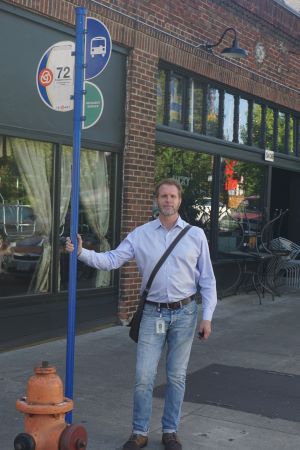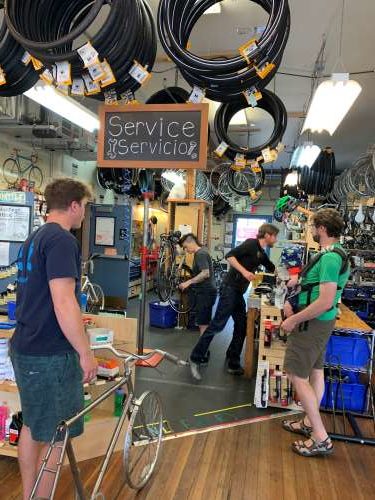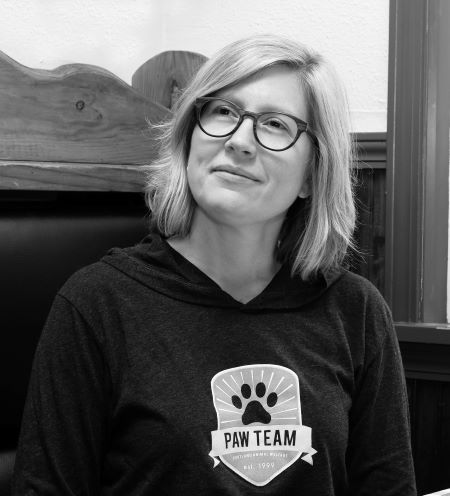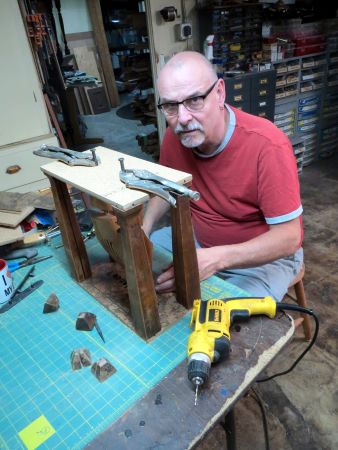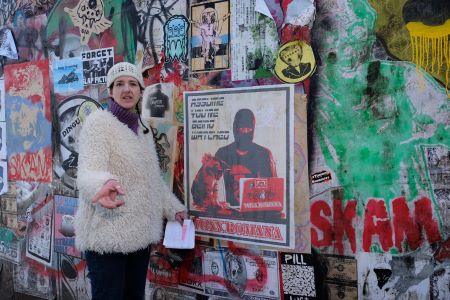By Nancy Varekamp | CNews Editor
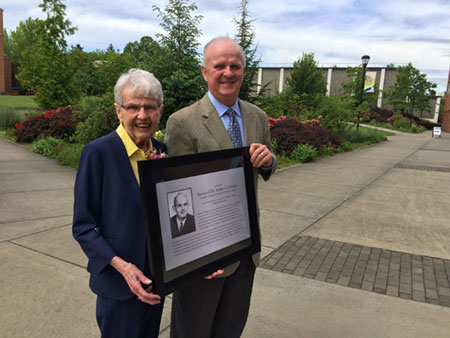
Longtime Concordians may recall Art Wahlers as a university patriarch and neighborhood association co-founder. Students at Concordia University now see his name on the Art Wahlers Green, the wide expanse of lawn, gardens and recreational area in front of the school’s library.
Art died in 2004 at age 91. He had moved to Portland to join the faculty in 1946 when Concordia was an all-male high school, and retired in 1986.
Mark Wahlers, his son, remembers playing soccer, football and baseball on the green as a student.
Joel Schuldheisz, a classmate of the younger Wahlers, recalls being one of several students punished by the senior Wahlers for playing football in a restricted area instead of the green.
When he did engage in sports on the green, Joel remembers baseball right field was close to the house on campus reserved for university presidents. “If you hit the ball hard enough, it went into the president’s patio.”
Now an exercise and sports science instructor at the university, he finds it fitting to name the area for Art.
Living just a block off campus, Art was one of the neighbors to convince the city in the early 1970s to repair outdated sewers that were endangering several houses. That effort also resulted in forming Concordia Neighborhood Association (CNA). Art served as the first CNA president.
The university’s involvement with CNA continued for decades, with staff and faculty members serving on the board of directors.
Denny Stoecklin, retired university chief financial officer, was among them. “Art had a knack for bringing people to a common understanding and purpose in a very soft handed way,” he said.
“Art was a collaborator, very good at connecting people, and he was a social activist before the term became popular, but without demonstrations,” Joel agreed. Like Denny, Joel served on the CNA board.
So did George Bruender, who said Art and wife Carol were an institution in the neighborhood. “Fastidious is a great word for Art,” he said. “He had the fanciest yard in the neighborhood.”
What would Art think of being honored?
“Art was a very humble individual, so my guess is that he might be embarrassed by all of the ‘fuss,’” Denny predicted. “But privately he probably would feel a certain sense of pride, knowing the institution carries on the mission and traditions he helped shape, and that he continues to be held in such high regard.”
Nancy Varekamp is semiretired from her career in journalism, public relations and – her favorite work engagement – writing and editing targeted newsletters.

